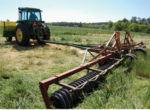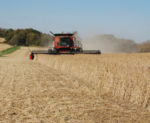Advertise Follow Us
Articles Tagged with ''Austrian winter peas''
What I've Learned from No-Tilling
Early no-till adopter Jerry Peery says he has a ‘moral obligation’ to protect and build soils on his Kentucky farm for future farming generations.
Read More
Killing The Most Popular Cover Crops — The Right Way
Effective termination of cover crops is essential if no-tillers are to get the best results from their seeding and establishment efforts.
Read More
What I've Learned from No-Tilling
Cover Crop ‘Epiphany’ Helps No-Till Take Another Step
A trip to North Dakota a few years ago sparked a new revolution for Curtis Furr’s decades-old no-till system.
Read More
Bio Strip-Till: Best of Both Worlds
Using cover crops with strip-tillage helps growers improve the crop-row environment, build soil organic matter and protect fields from erosion.
Read More
No-Till Tradition, Passion For Change Fuel Miller Farms
Wisconsin no-tillers make use of cover crops, gypsum, winter wheat and precision ag to enhance soil biology and bump up no-till yields.
Read More
What I've Learned from No-Tilling
It Takes Time To Learn How To No-Till Slopes That Exceed 50%
Idaho direct-seeder Russ Zenner spent more than 20 years developing rotations and testing equipment to continuously no-till some of the world’s steepest slopes.
Read More
Keep Yields From Cooling Off
Cover crops can offset the major causes of yield drag in fields making the transition to no-till and improve the soil biology of fields lacking crop and residue diversity
Read More
What I've Learned from No-Tilling
Perseverance, Equipment Updates Are Mainstays For No-Tiller's Success
More than 20 years learning, adapting equipment and expanding crop rotations to include small grains and cover crops are a winning formula for Wisconsin no-tiller
Read More
What I've Learned from No-Tilling
30 Years Of Cover Crops Anchor No-Till System
Sharp increases in organic matter and vasity reduced fertilizer cost are just a couple of the benefits that David Brandt has realized on his Ohio farm.
Read More
Combining Effective Cover Crops With Longer Crop Rotations Will Pay Big Dividends
Repeated cover cropping can lead tolong-term soil improvements that can help you overcome no-till yield concerns.
Read More














